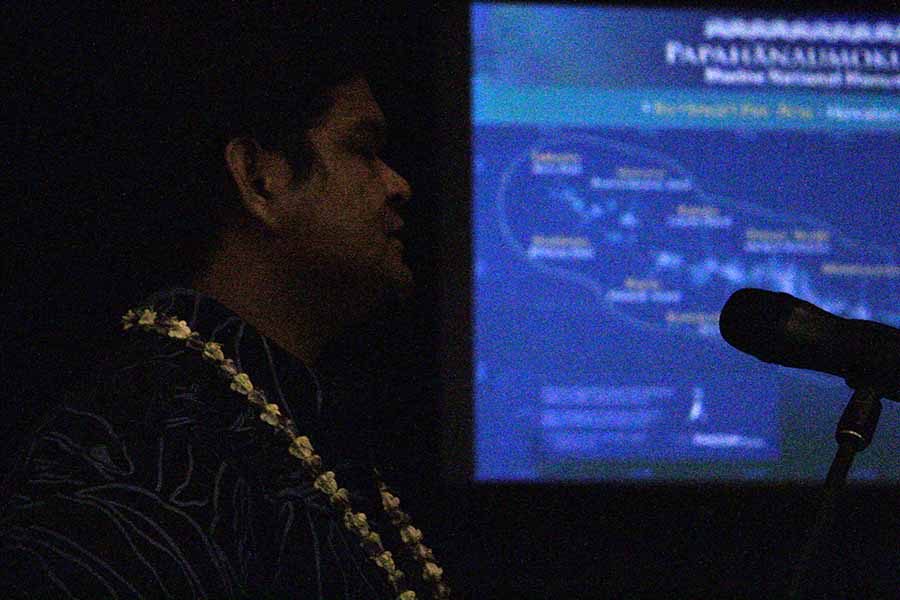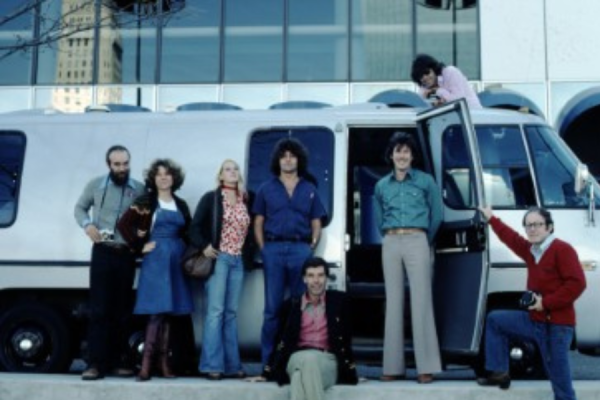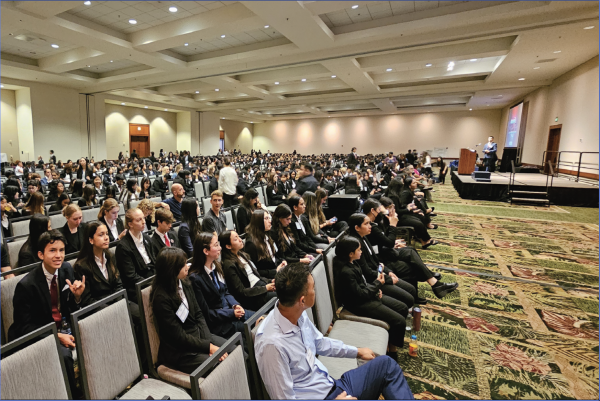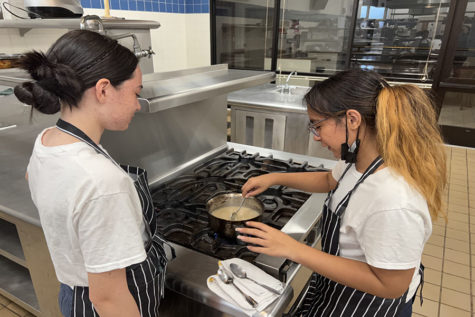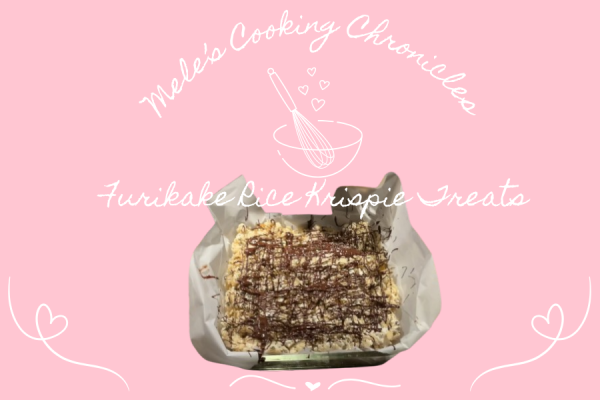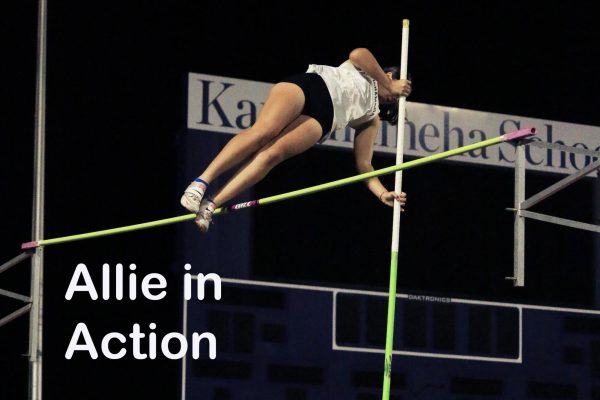NOAA specialist shares manaʻo on Papahānaumokuākea
Photo by Deven Aruda
Kamehameha alumnus Kalani Quiocho, Native Hawaiian program specialist, speaks at a presentation on Papahānaumokuākea as part of the Huliau Film and Lecture Series, Thursday.
Many people don’t know much about the world’s largest marine conservation area in the northwestern islands of the Hawaiian archipelago, but a handful of community members now know much more.
Kalani Quiocho (KSK ’02), Native Hawaiian program specialist with NOAA, presented information on the cultural and conservation importance of Papahānaumokuākea Marine National Monument as part of the Huliau Film and Lecture Series in Keōpūolani Hale on Thursday.
After getting his degree in Hawaiian studies from the University of Mānoa, Quiocho lost his job, so he didn’t continue on to graduate school at the time. Instead, Quiocho said he went back to doing what he knew best, and that was fishing.
He began to work on akule boats as a fisherman, until he learned of and acquired a shipboard position known as an observer.
The purpose of an observer is to collect data from the U.S. commercial fishing and processing vessels for the National Oceanic and Atmospheric Administration.
While he worked as an observer Quiocho truly saw the effects humans have on the ocean.
He said, “Seeing tens of thousands of pounds of fish come out [of the ocean] really affected me as a kanaka.”
Because of this realization of his kuleana to the ocean, he decided to get his marine science degree at the University of Hawaiʻi, Hilo, which led to him being employed at NOAA.
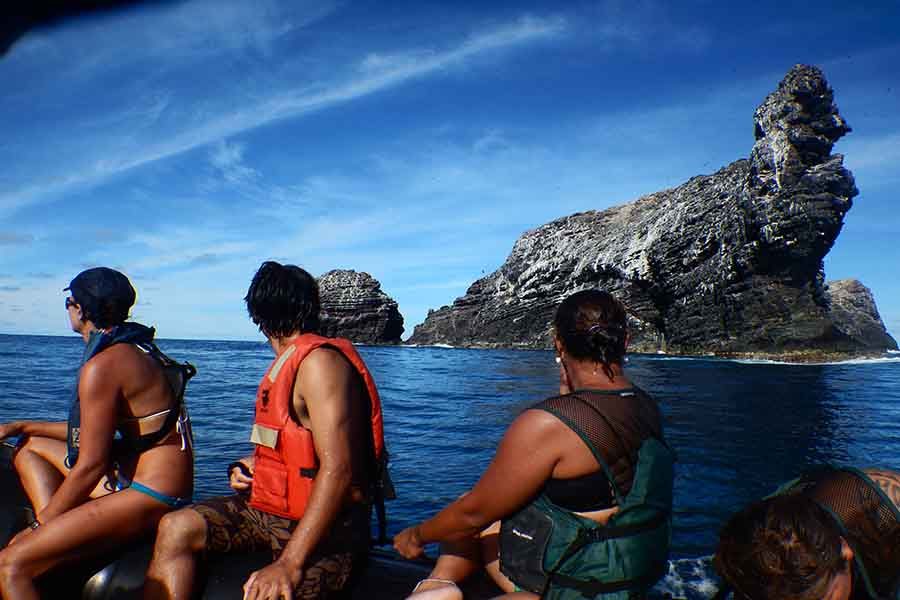
Kalani Quiocho and others travel to islands in Papahānaumokuākea.
Quiocho’s job includes not only visiting, conserving, observing, and archiving activities related to Hawaiian culture, but also community education and outreach.
In his presentations, he shares little known and fascinating information about the reserve area. For instance, he said that a permit is needed to access or do any activity within its boundaries to limit human impact on the cultural sites.
He said that on some of the islands, one can’t go even a few feet without coming into contact with a cultural site. In fact, on his first visit, he said he was compelled to oli because his feeling of connection to the land and its ancestors was so strong he just had to do it.

The national monument is important and heavily protected because a quarter of the marine species within its boundaries are only found in Papahānaumokuākea, and it is a breeding ground for Native Hawaiian birds, such as the Nihoa Finch, Nihoa Millerbird and Laysan Duck. All birds are listed as endangered by the International Union for the Conservation of Nature.
NOAA’s vision is to forever protect and perpetuate ecosystem health and diversity and the Native Hawaiian cultural significance of Papahānaumokuākea.
Quiocho said,”We look at the old and we look at the new and find the solution we need now.”
To learn more about the Papahānaumokuākea Marine National Monument visit the website http://www.papahanaumokuakea.gov/.

The island of Nihoa is also known as Moku Manu or Bird Island, and it is located in Papahānaumokuākea.

